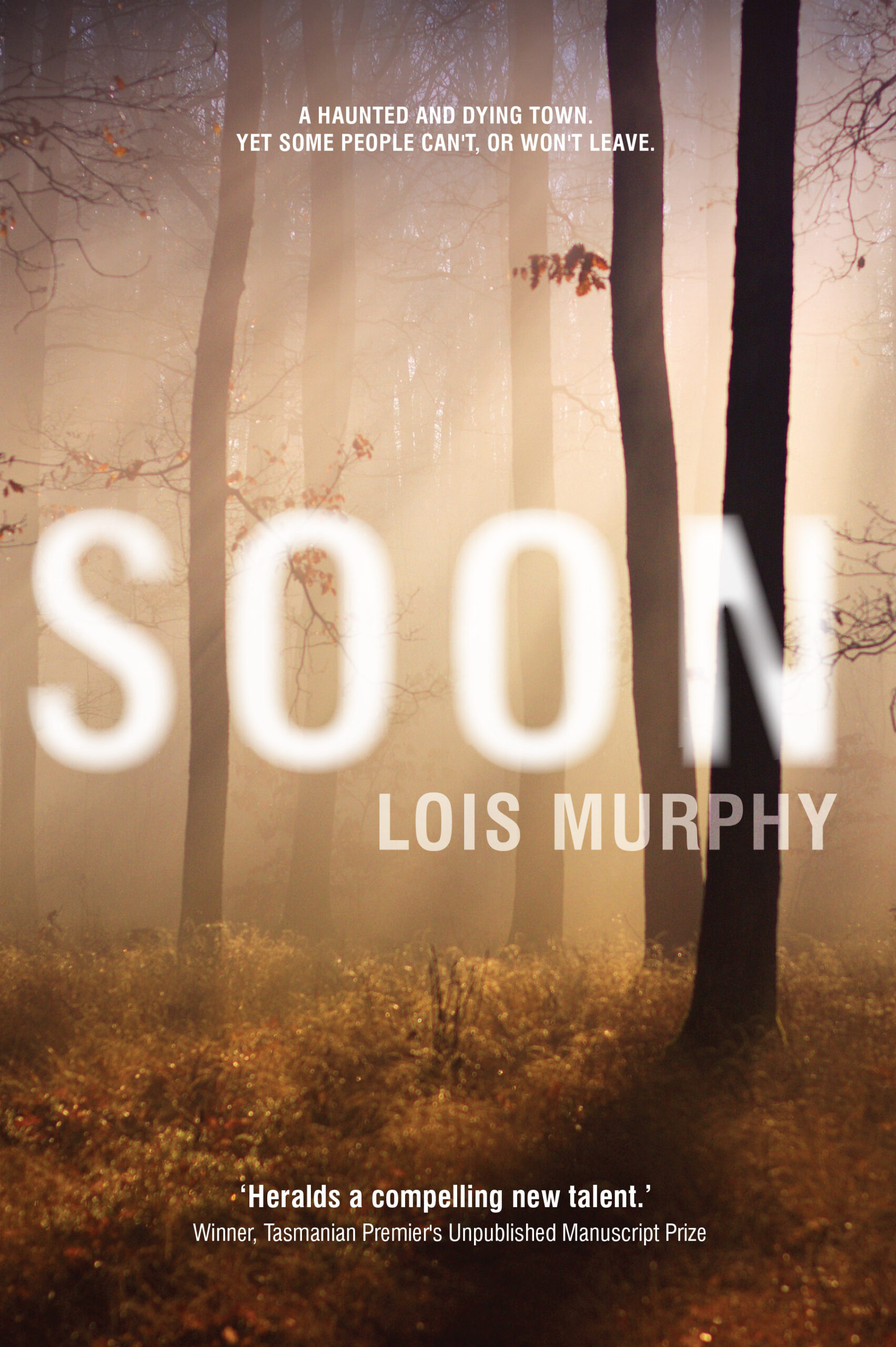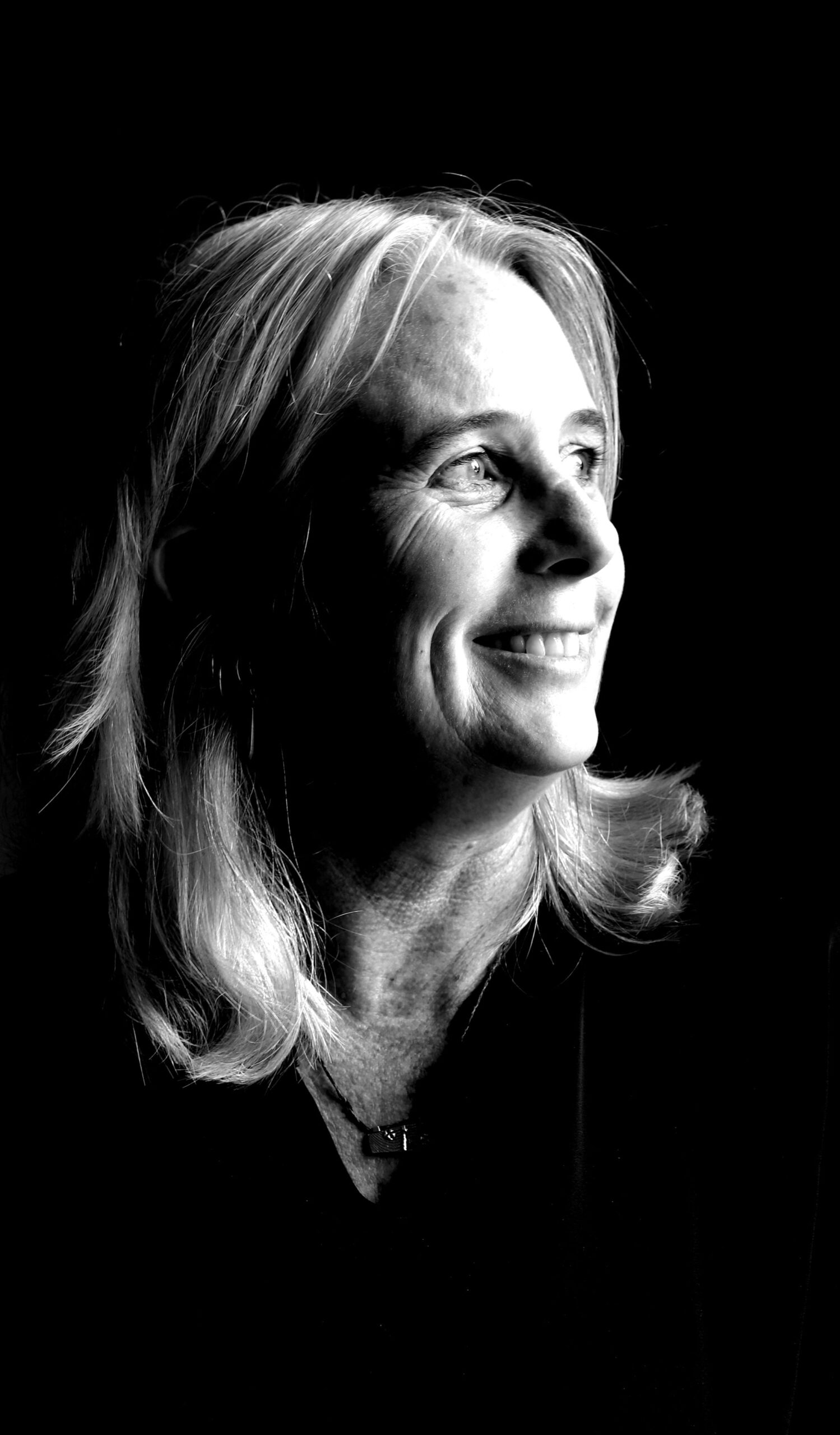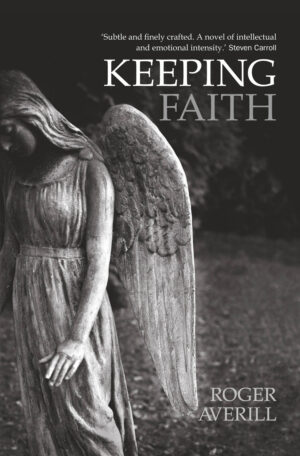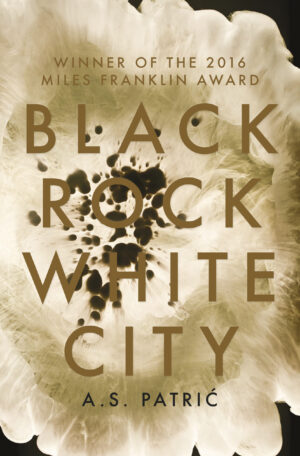Australia has a thriving community of horror writers but only rarely does local horror find a mainstream readership. Lois Murphy’s classy, clever debut, Soon, deserves to be that rare example.
Soon is a haunted house story – except it isn’t the houses that are haunted. Soon is set in Nebulah, a tiny settlement in Western Australia, three hours from the nearest town. It’s a ghost town, for a very good reason. As soon as the sun sets, a nightmarish mist descends on the streets and yards and if you’re caught out of doors… well, it’s not good. Almost everyone has cleared out and schools, shops and offices are deserted and derelict. There are no birds in the trees. Ex-cop Pete is one of the few holdouts who can’t bring themselves to leave their homes, along with retired widow Milly, farmer Li, ne’er-do-well Sticks and annoying couple Gail and Tom. It only takes one mistake – a broken-down car, an unnoticed cracked window – for the town’s population to drop messily.
It’s a thrilling set-up, but it’s Murphy’s intelligent manipulation of horror genre conventions that shines. The houses are safe, for a change, and the ghostly dangers are outside. The narrator, Pete, hits all the clichés – divorced, drinks too much and is estranged from his daughter – but he’s a bit hopeless, and he’s focused on survival rather than detection. There’s also a real depth and believability to the mindset of these people who can’t bring themselves to leave despite the dangers, because after all, all the residents need to do to escape their fate is pile into a car during daylight hours and floor it. In this, Murphy was inspired by Wittenoom, the deserted town in Western Australia that was once Australia’s only blue asbestos mine, where a couple of holdout residents even now refuse to leave despite government warnings.
In her clever characterisations, Murphy has given each of her residents a reason why, for them, the world away from Nebulah is even less appealing than the terror of the mist. The obstacles that need to be overcome are mental and psychological. The battle for survival is both without and within.
Stephen King can keep his maniacally grinning clowns – Soon made this reader get out of bed to check the windows were closed. If there’s any justice, there’s a queue of filmmakers outside Murphy’s door right now, chequebooks at the ready.
L.S. The Saturday Paper Oct 7, 2017
A nebula is a cloud of interstellar gas and dust. So it is appropriate that Soon is set in the fictitious town of Nebulah. It is a paranormal thriller, but it is also about relationships, loyalty and the desperation of necessity. Nebulah is like any isolated Aussie town, with its characters, tenuous economy and issues. But that changes on June 22 1998, when a convoy of grey four-wheel drives carrying shadowy men arrive and then, just as quickly, disappear down a dead-end road. With them go the birds. Suddenly each dusk Nebulah’s streets become deadly as a mist descends, bringing supernatural forces trying to seduce the living outside. Most nights, the handful of residents who haven’t been slaughtered or run out of town, gather with the TV turned up to block out the scratching at the door. Ex-cop Pete feels a duty to protect those clinging to their homes. but he fears his number might be up soon, too.
Verdict: Dead Good.
Shelley Hadfied, Herald Sun 7 October 2017
A fleet of forebodingly official-looking vehicles arrives one winter solstice in the West Australian town of Nebulah. The vehicles disappear as mysteriously as they appeared, and with them go the birds and wildlife. Before long, the hauntings begin. A strange mist envelops the town at night, tapping on windows and whispering insults. Those caught outside disappear as mysteriously as the vehicles that were a precursor to the mist. The only safeguard is to hide inside, lock up the doors and windows, and put the telly on. Pete, an ex-cop, and a handful of survivors are all that are left to tell the story.
I found it hard to place Soon, and not in a bad way. It refuses to sit comfortably in any one genre. It draws freely from crime and horror tropes but isn’t restricted to them. It even, in its own way, deals with the corporate take-over of rural and urban Australia, and a government’s unwillingness to assist those in crisis if that crisis is too hard to define. But the story comes mainly from the intense relationships between the few characters that remain in the town. Each has a strange and desperate relationship to each other and the town that everyone else has fled, which only adds to the sense of discomfort and dread.
The fact that Lois Murphy has spent some time on the road in Australia shines through in this novel. The characters are misfits, already on the outer before the mist arrives, unable to sit neatly in twenty-first-century suburban Australia. Though, instead of being people who have done their time in regular society and have now decided to live on the road, these people are victims of circumstance: the world has passed them by and forgotten about them. The desperate fatality of individuals and groups trying to survive in a world that is trying to erase them is what drives this tightly wound, menacing book.
Michael McLoughlin, Readings Monthly, September 2017
Five four-wheel drives with tinted windows roll slowly, mysteriously, through a small Australian town during a winter solstice. Their purpose is unknown, their arrival an ominous portent. When they depart, just as inexplicably, the birds disappear and a malevolent evening mist descends on the town each night. A handful of locals, led by ex-policeman Pete, either can’t or won’t leave the only place they call home, and so they stay to face the mist. Loosely based on the true story of the asbestos town, Wittenoom, and written with a poet’s instinct for language, Lois Murphy has created a unique, haunting and atmospheric tale in her debut novel. The ‘soon’ of the title sets the tone of the book, and each page drips with foreboding. Her characters are the kinds of people you might meet in any small Australian town: battling to survive and wilful in the face of change, as their home becomes a ghost town. While Soon draws on genre tropes (from crime and horror in particular), the story focuses on the human relationships in the face of adversity rather than the strange happenings themselves. It will appeal to readers who like their literary fiction with a dash of the mysterious and strange.
Deborah Crabtree, Books + Publishing
As I said in my post last night for this debut novel by Lois Murphy, Soon is fascinating reading. What I didn’t know when I wrote that, just before bedtime, was that I wasn’t going to be able to put the book down and turn out the light. Don’t start reading this book at bedtime if you have to get up and go to work the next day!
As with my recent reading of Claire G Coleman’s Terra Nullius, I’m going to have to be careful of spoilers…
‘Nebulah’ – with its echoes of ‘nebulous’ – is a clever name for the fictional inland town in Western Australia where the action takes place. It is very remote, three hours drive away from the nearest town of Woodford, which is also small and remote, and itself a good long drive from Mandurah. The story begins with the suicide of an old man called Rolf who couldn’t go on with the loneliness of eking out a living in a dying town.
Twelve months before, Nebulah had a population of just over 500. Like many small rural towns its days were numbered, but it was clinging to survival. But this stoic population fled after the arrival of a mysterious mist which arrives each night at dusk to terrorise the inhabitants. And now the diehards who refused to leave have had a shocking blow though they knew it was inevitable: Liz, a single mother who stayed because she had nowhere else to go, has finally had enough and fled with her children, and her departure was the last straw for Rolf. From eleven people sticking it out, they are now down to six.
Pete, an ex-policeman who narrates the story, is a fine example of how Murphy has subverted familiar genres. Yes, he’s world-weary, and yes, he specialises in failed relationships, and yes, he smokes and drinks to excess. But he’s not a detective trying to solve a crime. As it says in the blurb, inspired in part by the diehards who refuse to leave the tragic town of Wittenoom even though they risk a fatal disease and a horrific death from mesothelioma, the interest in this novel is the characters who remain in the face of an insistent danger. Pete stays because he has bonded with two women, and they won’t leave. The widow Milly won’t leave the home she had with Gavin who died in a road smash twelve years ago, and Li is a Cambodian refugee from the Khmer Rouge who has painstakingly rebuilt her life by growing organic produce for the co-op in Woodford. Although Milly and Li are both staunchly independent women and don’t need his protection, Pete, Milly and Li have formed a kind of protective network – along with a neurotic couple called Gail and Tom and a dubious character nicknamed Stick, who has a different kind of crop well-suited to being grown in an isolated place.
The only horror I’ve ever read is by Edgar Allan Poe and that just made me laugh, so I Googled ‘tropes of horror fiction’ to see if I could identify how Lois Murphy has managed to subvert the horror genre. I came across a very interesting article at Writers Digest, which was called ‘The Horror Genre: On Writing Horror and Avoiding Clichés’ This was not only helpful in explaining what the clichés were to someone unfamiliar with the genre, but also showed me that Soon does exactly what’s suggested: she has certainly created an atmosphere of terror that makes the reader’s heart gallop, but she has created an evil where characters are confronted not by a monster in a mask but by what’s in a mirror.
The novel is grounded in realism, even though there are fantastic elements. Murphy plays with reader scepticism too, with her portrayal of a clairvoyant called Alex warning of impending doom on the night of the coming winter solstice, and then there are some witless university students on a jaunt with a white witch called Xandrea. Her portrayal of the way young people under peer pressure box themselves into a corner from which they can’t escape is brilliant.
I’m not an impressionable reader, but overnight when I took a brief adjournment from the book to make myself some middle-of-the-night hot chocolate and rest my tired eyes, it crossed my mind – just momentarily in that moment from subconscious thought to reality – that there could be something swirling around out there on the other side of our French windows!
Soon was the winner of the Tasmanian Premier’s Prize for an Unpublished Manuscript, and it’s published by Barry Scott from Transit Lounge (who have brought us last year’s Miles Franklin winner Black Rock White City by Alec Patric and From the Wreck by Jane Rawson, and a stack of other beaut titles as well).
Lisa Hill, ANZ Lit Lovers https://anzlitlovers.com/2017/08/31/soon-by-lois-murphy/






